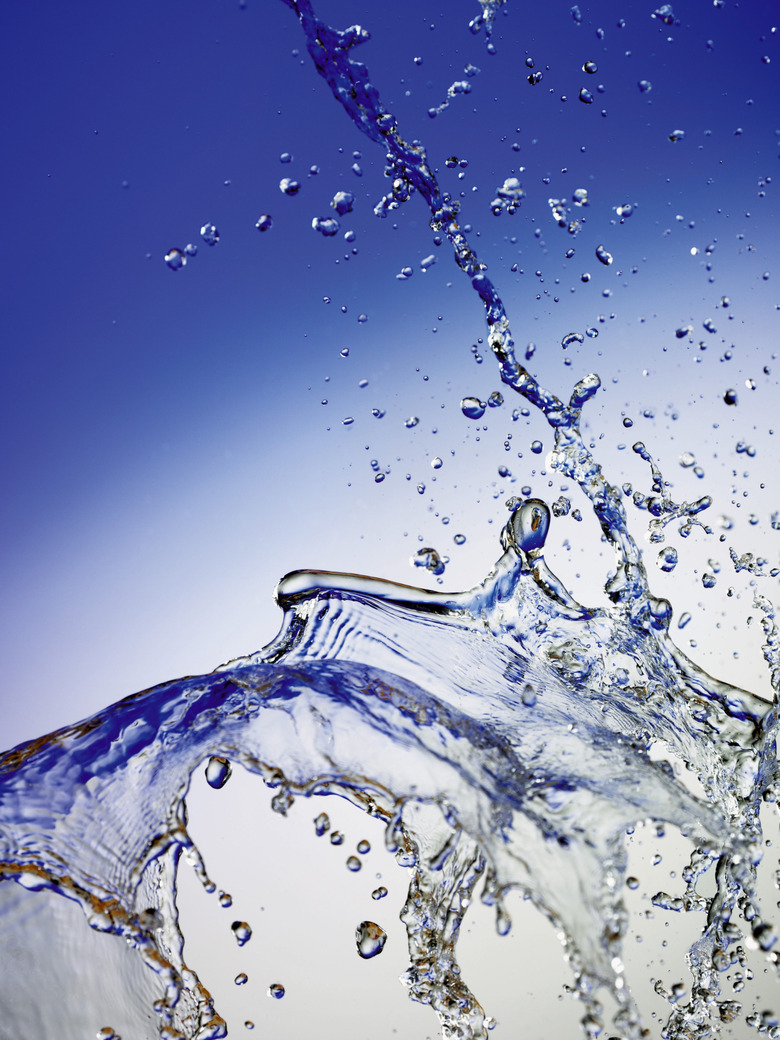What Does The Cytoplasm Consist Of?
From a molecular viewpoint, the cell is a busy place — just walk the streets of New York City to get an idea of what it would feel like to be a cellular molecule. The nucleus is a familiar term, and you might know what a ribosome does, but what exactly does "cytoplasm" refer to? In short, this cellular term means everything, both large and small, between the cell membrane and the nuclear membrane.
Water and Ions
Water and Ions
The cytoplasm is highly fluid in nature, and the most obvious component of that fluid is water. Cytoplasmic fluid content is one of the main reasons that more than 50 percent of the human body is water. The fluid also contains several different ions that are critical to cellular activity or homeostatic maintenance: These include calcium, sodium, potassium and phosphate. For an example of how important ions are, the movement of sodium and potassium ions allows a neuron to pass along a nervous impulse. You may also see this part of the cytoplasm referred to as the cytosol.
Organelles
Organelles
The other obvious components of the cytoplasm are organelles such as mitochondria and the Golgi apparatus. Some of these are large enough to be seen on a microscope slide, and they each play an important role in cellular function.
Cytoskeleton
Cytoskeleton
The cytoskeleton is a complex series of protein rods and other filaments running through the cytoplasm. These rods, called microtubules, microfilaments and intermediate filaments, help support the cell and allow the cell to move around. In addition, they act as a type of "highway system" for other cytoplasmic components to move around on. Vesicles, described later, heavily rely on the cytoskeletal network to arrive at the proper cellular destination.
Biomolecules
Biomolecules
At any given moment in a cell's life cycle, hundreds of different biomolecules could be involved in dozens of different metabolic pathways and other cell processes, depending on the type of cell. At the molecular level, proteins, carbohydrates, lipids and nucleic acids crowd the cytoplasmic fluid along with water molecules and ions. Unfortunately, this flurry of molecular activity cannot be seen with a standard microscope — it would be an incredible sight to see otherwise.
Vesicles
Vesicles
Vesicles are the "shipping boxes" used by the endoplasmic reticulum and the Golgi apparatus — both major organelles — to send manufactured biomolecules throughout the cell. These membrane-bound packages can also be sent to the cell membrane, where their contents can be secreted from the cell or integrated into the membrane. One special group of vesicles, lysosomes, deserve special mention because they are hybrid vesicle-organelles. The cell needs certain digestive enzymes in order to break down harmful toxins and other compounds, but those same enzymes could destroy important cellular structures. The Golgi apparatus packages these enzymes into lysosomes so that the cell parts are protected.
References
- Nature Education: Cytoplasm
- Nature Education: Microtubules and Filaments
- Nature Education: Ion Channel
- Human Anatomy and Physiology; Elaine N. Marieb
- Pharmacy College Admission Test Review; Kaplan Publishing
- Biology4Kids: Cytoplasm
Cite This Article
MLA
Mullis, Robert. "What Does The Cytoplasm Consist Of?" sciencing.com, https://www.sciencing.com/cytoplasm-consist-of-13782/. 24 April 2017.
APA
Mullis, Robert. (2017, April 24). What Does The Cytoplasm Consist Of?. sciencing.com. Retrieved from https://www.sciencing.com/cytoplasm-consist-of-13782/
Chicago
Mullis, Robert. What Does The Cytoplasm Consist Of? last modified August 30, 2022. https://www.sciencing.com/cytoplasm-consist-of-13782/
